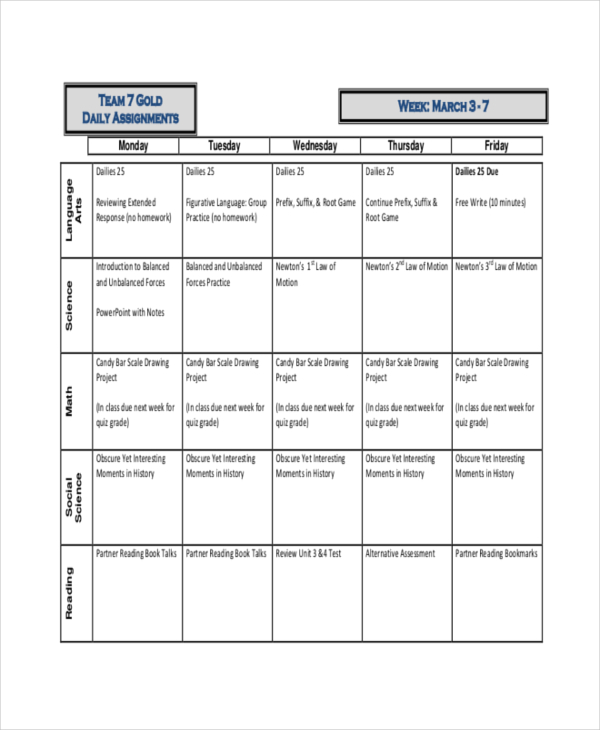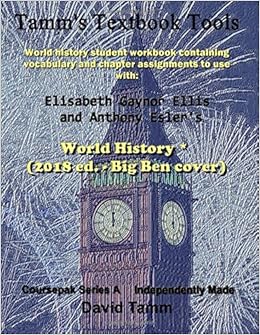Daily Assignmentsworld History
World History Daily Lessons and Assignments. World History Periods 2-3, 5. Google Classroom Codes. Period Two: vmsygvu. Period Three: vapfi5q. Period Five: ufuqvbv. Semester One 2020. We will begin the Fall, 2020 Semester with Distance Learning that will begin on August 10th. Required content and lessons will be assigned through Google. Discussion Board Post – due 8/28, 11pm, start a new thread in the Discussion Forum and title it with your name: Talk about something in world history (not US or Canada related) that interests you, and what kinds of history you find interesting (agriculture, technologies, geography, women, war, etc.). Please record a 2-3 minute audio or video. Below are the daily assignments for U.S. History & APUSH If you are absent you are to reference the page for the assignment/materials you missed. They are due the day after your return. Administration; Barnes, Annette; Bickle, Jedidiah; Blackwell, Bobby; Bowman, Bernard; Bright, Shaji; Cafeteria; Campbell, Patrice; Carswell, Donny; Carter, Tammy.
Assignment Summary
Analyze two images from websites you identified for last week's art assignment.
Learning goals
- Student identified two religious objects housed at credible cultural institutions.
- Student gave citations (URLs) for two religious objects.
- The two objects are from different religions in different parts of the world.
- Student will analyze the historical importance of the two objects by answering questions.
- Student demonstrates an understanding of the differences between orthodox and heterodox belief.

Background
By now you have a sense of both the history of three major world religions and the art that those religions have influenced. We're going to extend your understanding of art and religion by focusing on how art is used within a religion and in contrast to other religions.
Your task this week is to choose two religious images (art) from the period 1650-1750). Around the Mediterranean this is the period of Scientific Revolution .
In Muslim North Africa and Buddhism China, this era witnesses the rise of a new dynasty (the Qing, 1644-1912) and the continued fracturing of African governments.
Throughout this period, artists continued to turn to religion for inspiration. Still, by this period, all three religions were well-established, and had well-established subject matters, styles, and symbolic languages.
Our task is understand how artists reflected the religious and non-religious themes of the day.
Before I lay out your project, let's cover one more concept that is central to understanding religion and the art of religion: orthodoxy and heterodoxy. To be orthodox in a religion means a believer concludes
there is only one correct way to practice that religion. To the orthodox (an all three religions have orthodox practitioners) any deviation from that one correct way is blasphemy and equally bad as non-believers
actions. For example, an orthodox Muslim might believe that his way of washing feet before prayer is the only way and all other ways are as bad as polytheism.The term 'orthodox' may be confusing as we often associate it with particular sect of Christianity. And Orthodox Christians are more strict in their interpretation of the Christian message. Nonetheless, orthodox
(small 'o') refers only to those who are rigid in their faith. Those who believe there are multiple ways to practice a faith are known as heterodox believers. For example, a Buddhist who says 'I meditate four times
a day, but my neighbor only prays twice, and that's ok' displays a heterodox religious behavior.Briefly: orthodox = strict interpretation of a faith
heterodox = diverse interpretations of a faith.
Religious art reflects this clash between the orthodox and heterodox. In fact, some of fiercest religious fights of this period are between practitioners of the same religion, not between practitioners of
different religions. For example, the Sufi and Shia and Protestants and Catholics fought far more against their co-religious than against other religions.
Your project is to chose two images from one of the websites we discussed last week and write about those two images.
Tasks
First: Chose two religious images based on the following criteria

- Original artwork is from the period 1650-1750 C.E. and has a creation date that is accurate to within a decade.
- Artwork should be housed at a credible cultural institution and the image of the artwork should be hosted on a credible website.
- Your two images must be from different religions from different parts of the world (For the purposes of this assignment we'll assume Turkey is not part of Europe).
- Your two images must have explicit religious content.
Second: Answer the following questions in complete sentences for both images. Most questions will require a short paragraph but no question requires more than one paragraph.
- What does your image tell us about the material past? (the material past is the stuff of history- shoes, clothes, food, transportation, books, etc).
- Is your image more of an orthodox or heterodox religious art piece?
Why do you conclude that? - Does your image address other religions or just its own? Why does that matter for understanding the history of religion in the region of the image?
- What historical trend/event/person/idea or technology is most evident in your image?
- In one sentence, what is the historical significance of this piece?
World History Textbook
My expectation is that answering these questions will require 200-300
words for each image.
Place the URL of your images at the bottom of your paper. You may, but
do not have to, post the images themselves.
Third: Submit your answers to the Experiment 9 discussion board.

Grading criteria
You will be graded based on the following rubric:
- Assignment effectively addressed all of the questions asked.
- Assignment uses clear language with a formal and clear style.
- Assignment contains no spelling, punctuation , or grammatical errors.
- Assignment demonstrates understanding about the period studied.
- Assignment effectively analyzes the history in a religious art image.
- Student gave citations (URLs) for two religious objects.
- The two objects are from different religions in different parts of the world.
- Student will analyze the historical importance of the two objects by answering questions.
- Student demonstrates an understanding of the differences between orthodox and heterodox belief.
Due:
Wednesday Aug. 21
Syllabus Signed

Who Am I?--E-mail information & proper MLA citations and the end of class. (See rubric below for details.)
Friday Aug. 23
Examples of 'What is a Civilization' pictures
Tuesday Aug. 27
Pretend you are a Sumerian. In 1st person, type 1/2 page--very descriptive--of what your day is like after reading pgs. 22-23. Include your occupation, your family, and anything to provide the reader with a detailed account of what your day-to-day happenings are. E-mail me your work.
Thurs. Aug. 29
#6. How was Sumerian culture spread throughout Mesopotamia?
#7. Why is the development of a written code of laws important to a society?
#8. How did the need to interact with the environment lead to advances in civilization?
#9. What advantages did living in cities offer the people of ancient Mesopotamia? Do modern cities offer any of the same advantages? Write a compare-and-contrast essay supporting your answer.
Wed. Sept. 4
Write your name in hieroglyphics. Use the following link for assistance.
Fri. Sept. 6
TEST
Chapt. 2 Assessment #1-7 (complete sentences) #9-15
Wed. Sept. 11
Brochure due @ end of class
Friday Sept. 13
Thursday Oct. 3
Chapt. 5 Assessment - 9-18 / 1-4
Chapt. 5 TEST
Wednesday Oct. 16
Friday December 6th
Tuesday December 10th
April 3rd
April 24
Daily Assignmentsworld History Book
May 21
